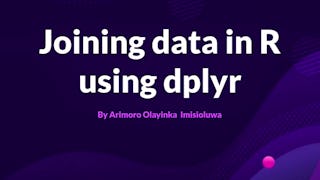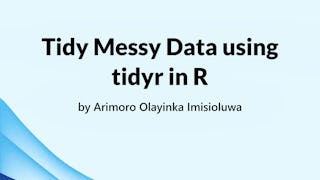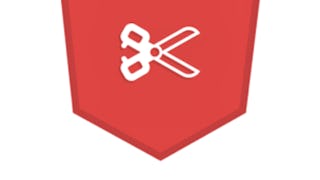In this course, you'll get hands-on experience with dplyr, the powerhouse package for data manipulation in R. You will work with real retail sales data as you learn to filter, arrange, and transform your data with ease. By the end of this course, you'll be confidently writing clean, efficient code using the pipe operator and essential dplyr functions that professional data analysts use daily.

Mastering Data Wrangling with dplyr


Mastering Data Wrangling with dplyr

Instructor: Microsoft
Access provided by Lviv Polytechnic National University
Gain insight into a topic and learn the fundamentals.
Beginner level
Recommended experience
6 hours to complete
Flexible schedule
Learn at your own pace
Skills you'll gain
Details to know

Shareable certificate
Add to your LinkedIn profile
Assessments
2 assignments
Taught in English
Recently updated!
July 2025
See how employees at top companies are mastering in-demand skills

There is 1 module in this course
In this course, you'll get hands-on experience with dplyr, the powerhouse package for data manipulation in R. You will work with real retail sales data as you learn to filter, arrange, and transform your data with ease. By the end of this course, you'll be confidently writing clean, efficient code using the pipe operator and essential dplyr functions that professional data analysts use daily.
What's included
3 videos8 readings2 assignments3 ungraded labs
Why people choose Coursera for their career

Felipe M.
Learner since 2018
"To be able to take courses at my own pace and rhythm has been an amazing experience. I can learn whenever it fits my schedule and mood."

Jennifer J.
Learner since 2020
"I directly applied the concepts and skills I learned from my courses to an exciting new project at work."

Larry W.
Learner since 2021
"When I need courses on topics that my university doesn't offer, Coursera is one of the best places to go."

Chaitanya A.
"Learning isn't just about being better at your job: it's so much more than that. Coursera allows me to learn without limits."
Explore more from Computer Science

Coursera

Coursera

Microsoft


